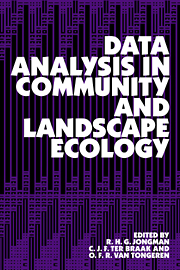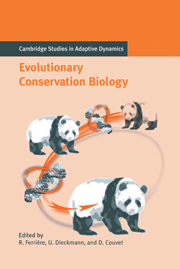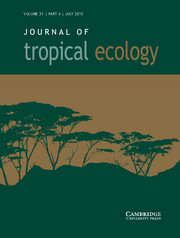
Elements of Mathematical Ecology
£86.99
- Author: Mark Kot, University of Washington
- Date Published: July 2001
- availability: Available
- format: Paperback
- isbn: 9780521001502
£
86.99
Paperback
Other available formats:
Hardback, eBook
Looking for an inspection copy?
This title is not currently available on inspection
-
Elements of Mathematical Ecology provides an introduction to classical and modern mathematical models, methods, and issues in population ecology. The first part of the book is devoted to simple, unstructured population models that ignore much of the variability found in natural populations for the sake of tractability. Topics covered include density dependence, bifurcations, demographic stochasticity, time delays, population interactions (predation, competition, and mutualism), and the application of optimal control theory to the management of renewable resources. The second part of this book is devoted to structured population models, covering spatially-structured population models (with a focus on reaction-diffusion models), age-structured models, and two-sex models. Suitable for upper level students and beginning researchers in ecology, mathematical biology and applied mathematics, the volume includes numerous clear line diagrams that clarify the mathematics, relevant problems thoughout the text that aid understanding, and supplementary mathematical and historical material that enrich the main text.
Read more- A complete introduction to the mathematics needed for the study of population ecology
- Written from the author's tried-and-tested lecture notes
- Numerous clear line diagrams throughout clarify the mathematics
- Relevant problems throughout the text aid understanding
- Also includes supplementary mathematical and historical material that enrich the main text
Reviews & endorsements
'Kot's current compilation will prove extremely useful …'. Acta Biotheoretica
See more reviews'Kot's book fills the need for a rigorous, graduate-level textbook in mathematical population ecology, and does it very well'. Quarterly Review of Biology
'This is a further important book in the field of the theoretical ecology … the volume will prove invaluable to all students of mathematical biology and theoretical ecology.' Folia Geobotanica
'… suitable for a year's course of study for upper level students and beginning researchers in ecology, mathematical biology and applied mathematics. … an excellent introduction to mathematical ecology for the reader with an appropriate mathematical background (calculus, differential equations and probability theory).' Zentralblatt MATH
Customer reviews
Not yet reviewed
Be the first to review
Review was not posted due to profanity
×Product details
- Date Published: July 2001
- format: Paperback
- isbn: 9780521001502
- length: 464 pages
- dimensions: 244 x 170 x 24 mm
- weight: 0.73kg
- contains: 239 b/w illus. 11 tables
- availability: Available
Table of Contents
Preface
Part I. Unstructured Population Models
Section A. Single Species Models:
1. Exponential, logistic and Gompertz growth
2. Harvest models - bifurcations and breakpoints
3. Stochastic birth and death processes
4. Discrete-time models
5. Delay models
6. Branching processes
Section B. Interacting Populations:
7. A classical predator-prey model
8. To cycle or not to cycle
9. Global bifurcations in predator-prey models
10. Chemosts models
11. Discrete-time predator-prey models
12. Competition models
13. Mutualism models
Section C. Dynamics of Exploited Populations:
14. Harvest models and optimal control theory
Part II. Structured Population Models
Section D. Spatially-Structured Models:
15. Spatially-structured models
16. Spatial steady states: linear problems
17. Spatial steady states: nonlinear problems
18. Models of spread
Section E. Age-Structured Models:
19. An overview of linear age-structured models
20. The Lokta integral equation
21. The difference equation
22. The Leslie matrix
23. The McKendrick-von Foerster PDE
24. Some simple nonlinear models
Section F. Gender-Structured Models:
25. Two-sex models
References
Index.
Sorry, this resource is locked
Please register or sign in to request access. If you are having problems accessing these resources please email [email protected]
Register Sign in» Proceed
You are now leaving the Cambridge University Press website. Your eBook purchase and download will be completed by our partner www.ebooks.com. Please see the permission section of the www.ebooks.com catalogue page for details of the print & copy limits on our eBooks.
Continue ×Are you sure you want to delete your account?
This cannot be undone.
Thank you for your feedback which will help us improve our service.
If you requested a response, we will make sure to get back to you shortly.
×








